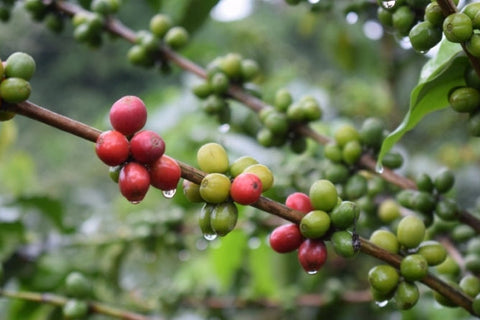To find out which technology is best, we tested the best in class grind by weight grinder available on the market today (Fiorenzato F64 EVO XGi) against its timed counterpart (F64 EVO) and the best in class (to our knowledge) timed grinder, the Anfim SP2.
- The grind by weight grinder was more accurate in achieving the target dose than either of the timer grinders.
- The timer-based grinder was more consistent in both dose and extraction time than the grind by weight grinder. The Anfim SP2 was remarkable in its consistency.
- If fast dial-in and lower wastage are key to you, you’ll want a grind by weight grinder, however if you want a more consistent extraction, timed based grinders, especially the ANFIM SP2, is your best bet.
If you’ve spent any time working as a barista, you will learn very quickly that consistency is king. Our goal in life is to extract an espresso that tastes amazing, every time. While many factors can influence taste, grinding coffee has the greatest impact on flavour. As such, obtaining a consistent grind is key to consistent flavour. Right now, most commercial espresso grinders on the market use a digital timer to control the dose of coffee. However, recently manufacturers have started to use gravimetry (i.e. grinders with inbuilt scales) to control the dose. But do we need to grind by weight to get a consistent result? In this article we will answer this question!

What we tested
Here, we tested the consistency of 3 grinders. The first was the Fiorenzato F64 XGi, the latest and greatest grinder from this manufacturer, which includes in-built scales. The F64 EVO XGi weighs the whole grinder after every dose and calculates the difference. This allows the barista to save valuable seconds as the grinder saves the time to tare and re calculate its weight after the dose is dispensed. We compared the grind by weight Fiorenzato grinder with the regular version, the F64 EVO with timed dosage. We then also tested these two models against one of the best-in-class grinders with a timed system: the ANFIM SP2. The performance of each grinder was tested in each of the following 4 categories. We believe that these four categories represent the most important parameters for real-world relevance to café service:
- Consistency: the variability between different doses
- Accuracy: how close were the doses to the target dose
- Dosing time: how long it takes to dose
- Dial in Speed: how long it takes to adjust your recipe
We chose a recipe to dial in based on 21.5 g of coffee in the portafilter, yielding 37g of liquid espresso in about 28 seconds.
The results
An easy way to see the variability of the mass of coffee dosed by each grinder during operation (in this case, up to 20 doses) is shown in the image below. What is shown here is a probability distribution profile of each grinder. This indicates the likelihood of a result within a statistical tolerance. In this case, what we see is that the narrower and taller a profile, the more consistent the grinder is. We’ve also marked the target dose. The further the peak of the grinder is away from the target dose, the less accurate the grinder.  Graph 1 Distribution of doses in mass around the mean for each grinder
Graph 1 Distribution of doses in mass around the mean for each grinder
In terms of accuracy in mass, the F64 EVO XGi was spot on (see Graph 1). With the target dose set at 21.5 g, we found that the average dose after 20 shots was 21.4 g. This means the gravimetric grinder is accurate to 0.1 g. Whereas the ANFIM SPII was not far from this, with 21.7g; the F64 EVO was 20.9 g. We can say then, the grind by weight grinder won this point! When we refer to consistency in mass, the ANFIM SPII won the gold medal as showed the less variability between the measures. Graph 1 is clear, this grinder was absolutely precise (denoted by a high and narrow peak). About consistency, we can’t say there is a big difference between the Fiorenzato grinders, as both showed the same dispersion.  Graph 2 Distribution of extraction time around the mean for each grinder
Graph 2 Distribution of extraction time around the mean for each grinder
Graph 2 gives us valuable information about consistency in the extraction. Again, the narrower and higher the peak, the more consistent. When we compare Graph 1 and 2, we can see that the ANFIM SPII showed us to be the most consistent in both cases. In contrast, the Fiorenzato XGi was the most accurate in mass but the least in time extraction. When we calculate the proportion of variation between mass and time extraction, calculated by the ratio of CVmass%/CVtime%, they are increased on average in a factor of 5 for each grinder. This can be appreciated it visually in the graphics above, all curves in Graph 2 widen when compared to Graph 1. Therefore, it means that there are accumulative errors involved in the whole process from grinding the coffee to the final extraction and this can highly influence the taste of the final cup. So once more, we can acknowledge the critical role of grinders. The more consistent it doses, the more consistent will be the extraction.
Some Analysis on the Results
Which grinder was faster?
When dosing, both Fiorenzatos have a delay of about a second, taking around 6.5 seconds from when we press the button to dose and when they dispense the coffee
Which grinder was faster to dial in?
This is a downside of grinding by time. Using a timer grinder, we may need at least 5 doses to get true mass – before readjusting grind size and repeating. You could easily waste over 200g of coffee doing this every morning. On the other hand, the grind by weight grinder is able to calibrate within 3 doses, with less coffee wasted.
Our Conclusions and Recommendations
The XGi has all the benefits of the F64 EVO while also being the most accurate grinder in our tests. It also has the advantage that it can hit your target mass sooner with less coffee wastage. This grinder however will take a little more care during operation due to how the scales operate, nothing can touch the body of the grinder, meaning tight spaces might be an issue. So, it turns out you don’t need a gravimetric grinder to get consistent dosing. But, if you care more about accuracy – or you don’t trust the timer, then a grind-by-weight grinder might be a better option.













